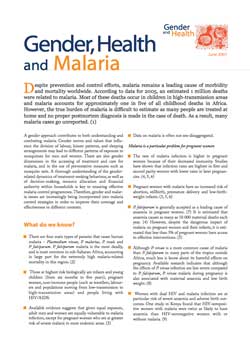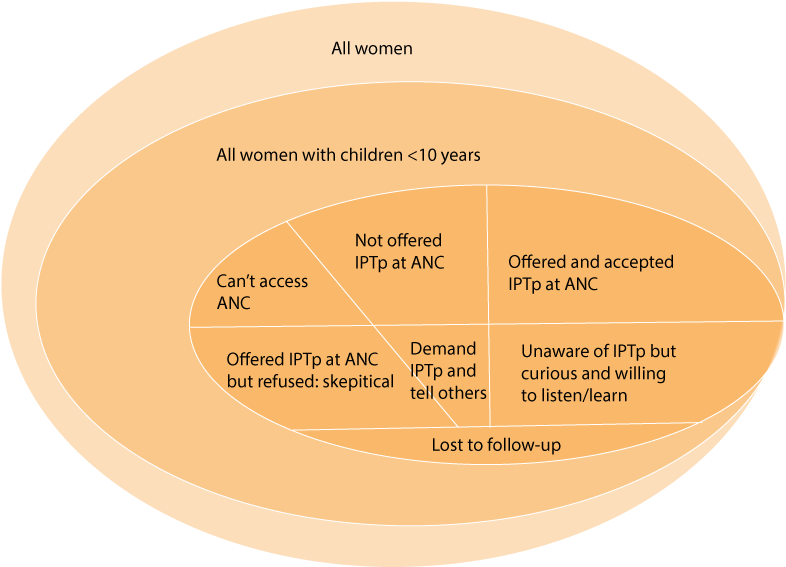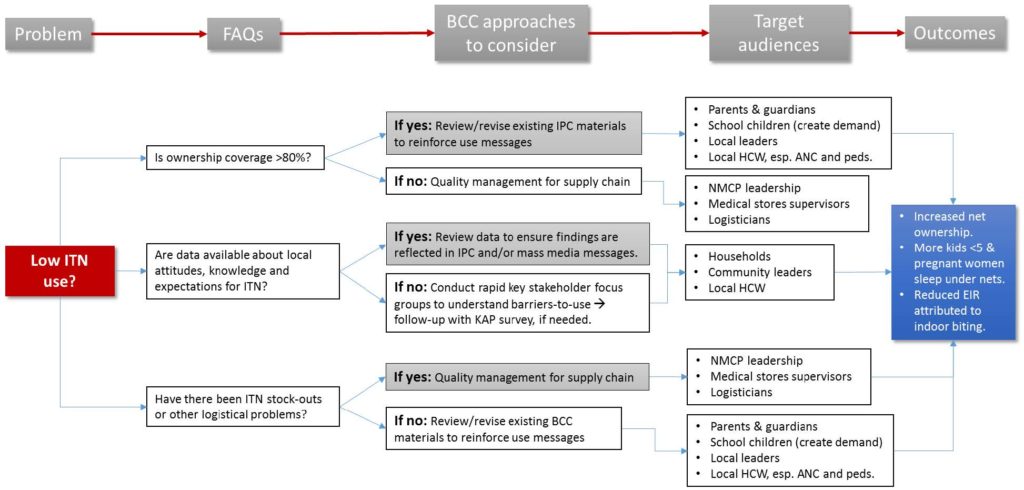Audience Segmentation and Problem Statements
ABOUT THIS SECTION
A complete situation analysis will summarize current information and provide a detailed account of findings from new primary research. This summary will help inform decisions regarding:
Primary, secondary, and tertiary audience segmentation
Prioritizing and defining problems
Segmenting Audiences
Specific audience segmentation is an important way to ensure SBCC activities are tailored and appropriate. Segmentation consists of dividing a large group into smaller sub-groups with similar needs, preferences and characteristics of influences to ensure that messages are targeted to a specific population’s motivations and needs. When segmenting, it is important to examine the demographic, geographic, sociocultural, behavioral, and psychographic characteristics of both primary audience(s) and secondary audience(s).
How-To Guide Step-by-step guidance on audience segmentation
Primary audiences are groups of people directly affected by or at the highest risk for a particular health issue. For example, all pregnant women are at risk of MiP, but women in their first and second pregnancy are at the highest risk. Likewise, while all women in their first and second pregnancies are at great risk, those who are HIV positive are at an even greater risk, as HIV treatment and IPTp with SP should not be used in combination. Groups can be segmented by not only demographic factors, but also by actions or attitudes. Those who do or do not practice certain behaviors, or those who have a certain disposition to behaviors, could be targeted. For example, you may decide to target women who are aware of IPTp and its benefits, but who refuse to attend ANC.1 Women who are aware of the benefits of ANC, and who express willingness to attend ANC, but lack access, are another example of a potential audience. Focusing on the behaviors of those who with authority or influence to grant or restrict access to MiP services could be chosen as either primary or secondary audiences.
How-To Guide Step-by-step guidance on audience analysis
Secondary audiences are often those with the ability or social influence to directly affect the knowledge, attitudes and behavior of a primary audience. MiP services often involve travel to health facilities, paying costs associated with medicine or care, and service provider allocation of commodities like LLINs. In many contexts their spouse’s support or permission, family, local leaders and friends play an important role in determining whether pregnant women can access these services. Examples of secondary audiences for MiP might include in-laws, traditional or trained midwives, social support groups and/or extended family.
Addressing both primary and secondary audiences ensures that individual, family, peer, community and social networks are leveraged to influence behavior.
Highest Biological Risk of Malaria:2
 Infants and young children, ages six months to five years.
Infants and young children, ages six months to five years.- Pregnant women; risk is highest in first and second parity women with lower rates in later pregnancies. Adolescent girls are also particularly vulnerable to malaria and in sub-Saharan Africa, and are often parasitic and anemic when they first become pregnant.
- Non-immune people (travelers, laborers and populations moving from low-transmission to high-transmission areas).
- People living with HIV/AIDs (women with HIV and malaria coinfection are at high risk of severe anemia and adverse birth outcomes).
- World Health Organization, Department of Gender, Women and Health (GWH), Family and Community Health (FCH). Gender, Health and Malaria. 2007. Available at: http://www.who.int/gender/documents/gender_health_malaria.pdf.
- President's Malaria Initiative Technical Guidance. March 2016. Accessed August 22, 2016.
Problem Statements
Problem statements are short descriptions of a specific behavior that indicate who is affected, where the behavior occurs and (if possible) the extent of the problem. Problem statements should be clear and concise to ensure all stakeholders are on the same page regarding the purpose of the intervention. For example:
‘’More than 50 percent of the district’s pregnant women in their first and second pregnancies attend ANC late in their second trimester, resulting in receipt of few doses of IPTp before delivery.”
In drafting problem statements, a number of potential issues surrounding MiP may arise. However, it is important to keep in mind that effective SBCC is narrow in scope. SBCC strategies that try to address too many issues at once or are general or too broad may not effectively reach a particular audience. It is best to limit the number of problems a communication strategy addresses and only cover the amount of issues that can realistically be incorporated into programs with existing resources. It may be helpful to develop a number of problem statements first, and then prioritize based on needs and available resources.
Given the crosscutting nature of malaria in pregnancy, it may be helpful to develop problem statements in a stakeholder workshop with a range of participants working at a high-level, as well as those working on the ground. To ensure that the problem statement is based on data and not individuals’ experiences, all participants should be given access to existing data, including the results of any primary data collection conducted and any lessons learned identified while conducting the situation analysis.
- President's Malaria Initiative Technical Guidance. March 2016. Accessed August 22, 2016.



